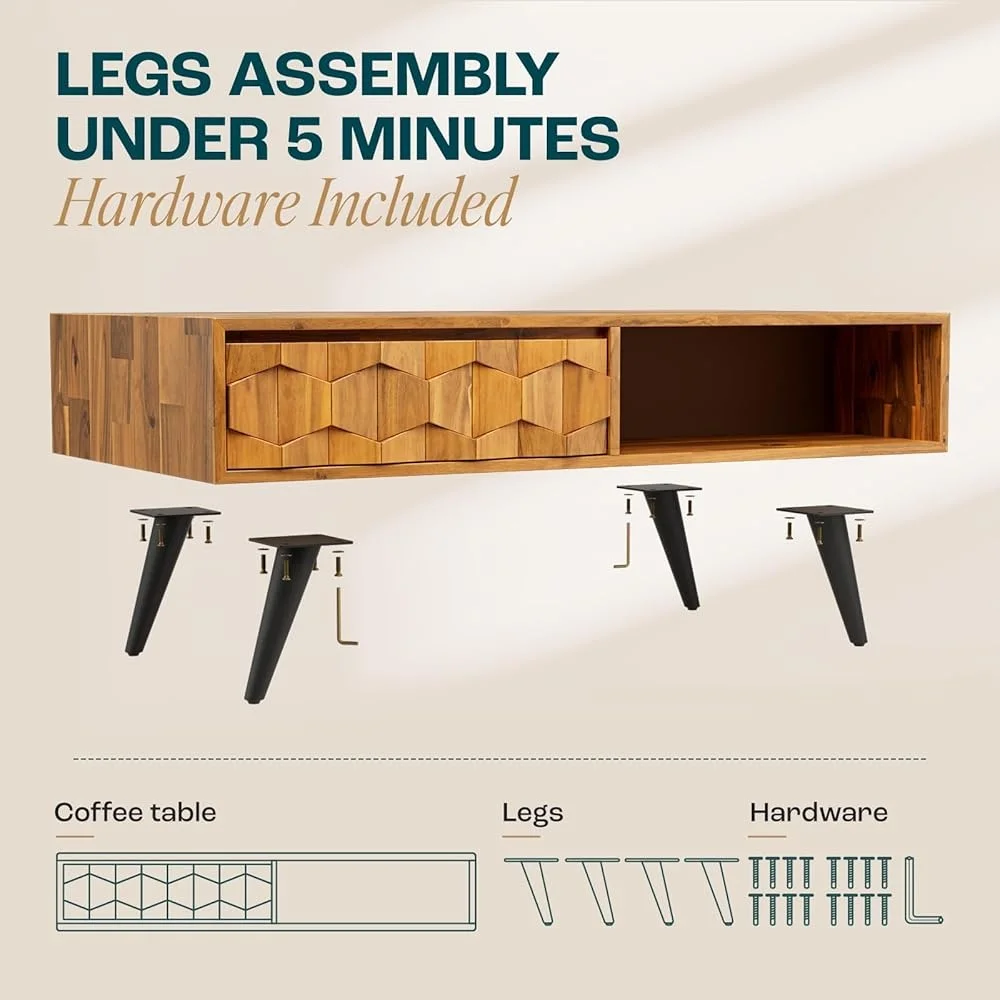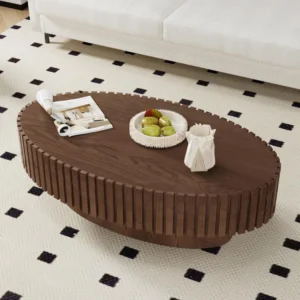Understanding Mid-Century Modern Design Philosophy
Mid-century modern design represents a pivotal moment in furniture history, emerging between 1945-1970 as a response to changing lifestyles and new manufacturing capabilities. This design movement continues to captivate homeowners today because its principles remain as relevant now as they were decades ago.
At its core, mid-century modern furniture embodies several fundamental principles:
- Functionality above all: Pieces were designed with purpose and practicality, eliminating unnecessary ornamentation
- Clean, uncluttered lines: Simple geometric forms and honest expressions of structure
- Organic influences: Natural curves and shapes inspired by the human body and natural world
- Exceptional craftsmanship: Quality construction methods that ensured longevity
What makes mid-century modern table design particularly special is how it revolutionized furniture by making good design accessible to average households. These tables weren’t just functional pieces—they were democratic objects that combined beauty with practicality in unprecedented ways.
The movement drew inspiration from earlier design philosophies, particularly the Bauhaus school and Scandinavian minimalism, adapting their principles to post-war America’s need for practical, versatile furniture. Many intelligent black mid-century coffee tables demonstrate how these principles translated into elegant yet functional pieces that still feel fresh and contemporary today.
Understanding the distinction between mid-century design and related aesthetics helps appreciate its unique contributions. The Scandinavian vs midcentury modern design approaches share common elements but differ in important ways, with mid-century often embracing bolder forms and more experimental materials.
The Teak Advantage: Why This Wood Defined an Era
Teak wood became synonymous with mid-century furniture for compelling reasons that went beyond mere aesthetics. Its intrinsic properties made it the perfect medium for expressing modernist ideals:
Durability Factors:
* Natural oils that resist moisture penetration and repel insects
* Exceptional stability that prevents warping or cracking
* Resistance to rot and decay, even in humid conditions
* Density of 40-45 pounds per cubic foot (640-720 kg/m³) providing structural strength
Distinctive Aesthetic Qualities:
* Warm golden-brown color that develops a rich patina over time
* Straight grain pattern with occasional variations that add visual interest
* Smooth texture that accepts finishes beautifully
* Subtle luster that enhances the wood’s natural beauty
Teak’s exceptional workability allowed craftsmen to shape it into both straight-lined minimalist designs and organic curved forms. The wood could be machined with precision, hand-carved with relative ease, and joined securely using traditional woodworking techniques.
Unlike many other furniture woods, teak contains natural oils that protect it from environmental damage. This made it ideal for the clean-lined, minimal designs of the era that deliberately exposed structural elements rather than concealing them behind ornamental details.
Exploring mid-century modern teak coffee tables reveals the remarkable diversity of designs achieved with this versatile material. From simple rectangular forms to organically-shaped statement pieces, teak provided the perfect medium for mid-century designers to express their creative vision.
Signature Leg Designs: The Foundation of Mid-Century Tables
The legs of mid-century teak tables aren’t merely functional supports—they’re defining design elements that contribute significantly to each piece’s distinctive character and visual appeal.
The Iconic Tapered Leg:
* Slender profiles that widen gradually toward the top
* Typical outward angles (splayed legs) between 8-15 degrees
* Creates visual tension and dynamic energy
* Often positioned slightly inset from table edges to enhance lightness
Alternative Leg Forms:
* Compass legs: gracefully curved outward like drafting tools
* Hairpin legs: minimalist metal supports that contrast with teak tops
* Sled bases: continuous wood forms that create stable foundations
* Sculptural designs: artistic interpretations that serve as focal points
The positioning of legs plays a crucial role in defining a table’s character. Inset legs create the illusion that the tabletop is floating, while legs positioned flush with edges provide a more substantial, grounded appearance.
Joinery methods for attaching legs reveal much about a piece’s quality and authenticity. High-quality tables feature mortise and tenon joints, dovetails, or other traditional woodworking techniques that ensure structural integrity while maintaining clean lines.
When styling black mid-century coffee table arrangements, the distinctive leg designs become important visual elements that contribute to the overall composition of a room, often creating interesting negative space and geometric patterns that enhance the aesthetic appeal.
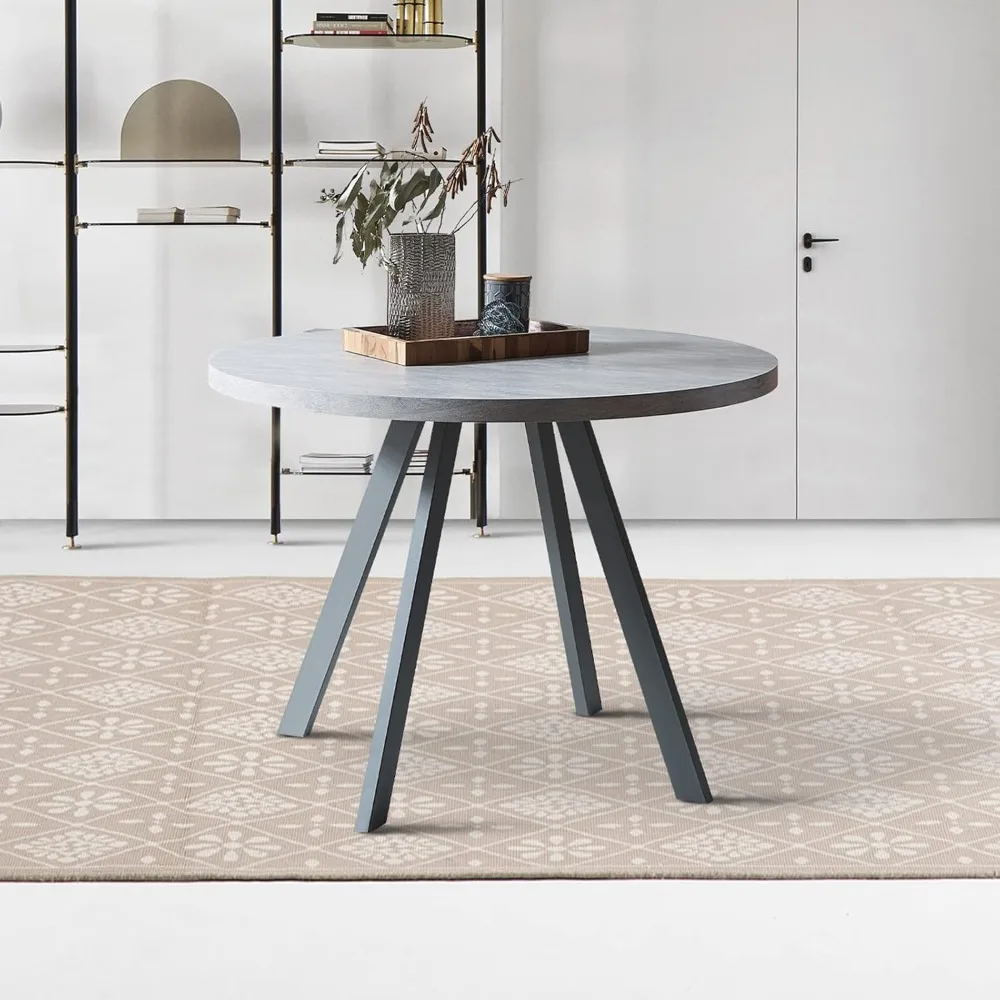
Tabletop Artistry: Shapes, Edges, and Surface Treatments
Mid-century teak tabletops showcase remarkable creativity and craftsmanship through their diverse shapes, thoughtful edge treatments, and meticulous surface finishes.
Characteristic Tabletop Shapes:
* Beyond basic rectangles and circles, designers embraced organic forms
* Surfboard shapes with elongated ovals and tapered ends
* Kidney and boomerang forms following biomorphic design principles
* Guitar-pick configurations offering visual interest while maintaining function
* Free-form shapes that prioritized fluid lines over geometric regularity
Edge Treatments:
* Knife-edge: dramatically thin profiles creating visual lightness
* Chamfered: angled cuts typically between 30-45 degrees, reducing visual bulk
* Bullnose: gentle rounded edges adding softness to geometric forms
* Sculpted: shaped profiles with varying dimensions for artistic effect
Surface finishing techniques enhanced teak’s natural beauty while providing protection. Danish oil penetrated the wood to nourish it from within, while soap treatments created a soft matte appearance. Some pieces featured teak oil applications that deepened the color, while others used lacquer for more substantial protection.
Grain direction became an important design consideration, with premium pieces featuring thoughtfully oriented grain patterns that enhanced the table’s overall aesthetic. Book-matched veneers created mirror-image patterns, while continuous grain across surfaces demonstrated attention to detail.
The diversity of black mid-century modern coffee table styles demonstrates how tabletop design elements could dramatically transform the character of a piece while maintaining the core design principles of the movement.
Innovative Functionality: Extension Systems and Storage Features
Mid-century teak tables exemplify the principle that form follows function through their ingenious integrated features that enhance versatility without compromising aesthetic integrity.
Extension Mechanisms for Dining Tables:
* Butterfly leaf designs that store leaves within the table structure
* Draw-leaf systems allowing smooth extension without removing pieces
* Drop-leaf sides that fold down for space efficiency
* Typical extensions adding 10-20 inches (25-50 cm) per leaf
Built-in Storage Solutions:
* Concealed drawers integrated seamlessly into aprons
* Magazine shelves positioned beneath tabletops
* Multi-level surfaces providing display and storage options
* Hidden compartments revealed through sliding mechanisms
Some of the most innovative designs featured transformable elements that allowed tables to adapt to different uses. Coffee tables could adjust in height to become dining surfaces, nesting tables could separate for flexible use throughout a room, and modular components could reconfigure based on changing needs.
What makes these functional elements particularly impressive is how they were integrated without disrupting the clean aesthetic lines. Mechanisms were engineered to operate smoothly while remaining visually unobtrusive, and storage features were incorporated in ways that enhanced rather than detracted from the overall design.
For modern living spaces where versatility is valued, mid-century modern lift top coffee tables offer practical solutions that honor the original design principles while addressing contemporary needs.
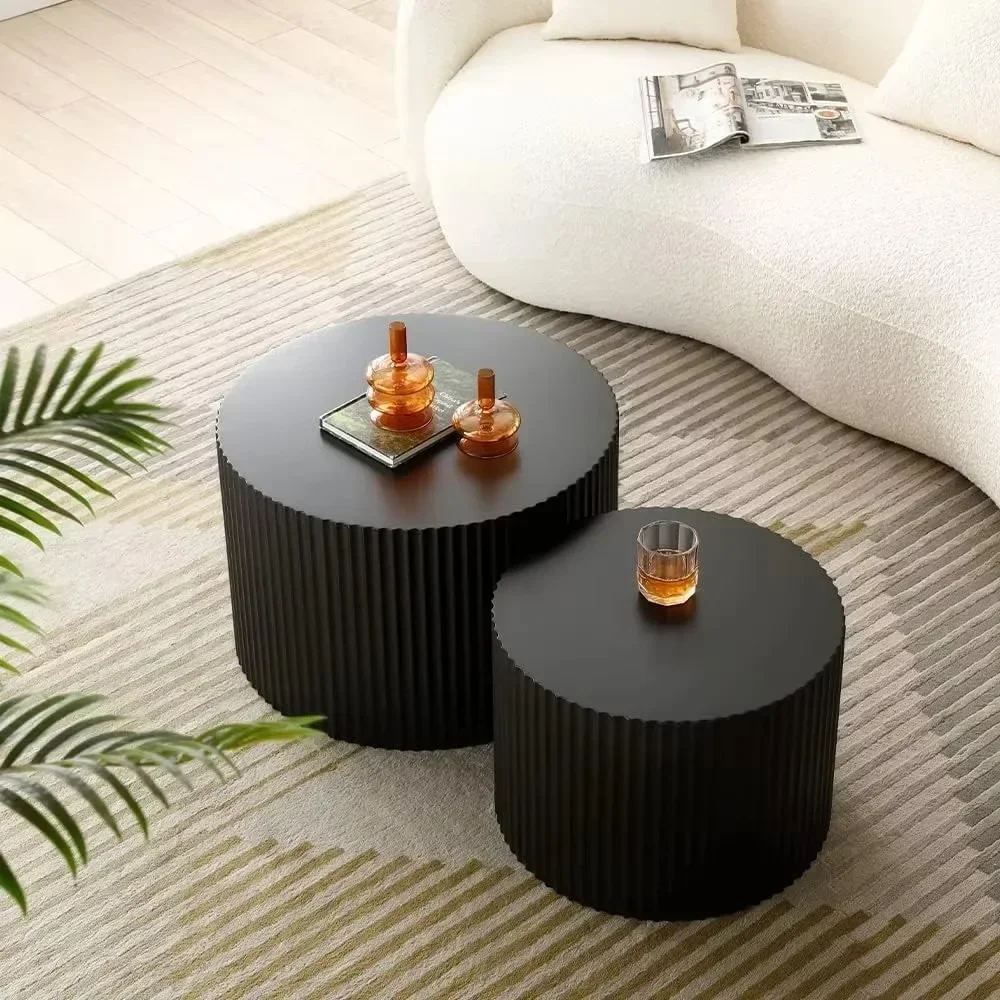
Material Combinations: How Teak Played With Other Elements
While teak often takes center stage in mid-century table design, its combination with complementary materials created some of the era’s most distinctive and memorable pieces.
Metal Accents and Structural Elements:
* Brass details adding warm golden highlights that complement teak’s tones
* Stainless steel providing sleek, modern contrast against wood’s organic qualities
* Chrome elements contributing reflective surfaces and industrial precision
* Metal stretchers reinforcing table structures while adding visual interest
Glass Integrations:
* Clear glass tops creating visual lightness and revealing base structures
* Smoked glass adding sophistication and depth
* Tempered glass surfaces offering durability and heat resistance
* Inset glass panels creating textural variety
Stone and Tile Elements:
* Ceramic tile insets providing heat-resistant surfaces and color contrast
* Marble inserts adding luxury and natural patterning
* Slate and stone elements contributing textural interest
These material combinations weren’t merely decorative—they served practical purposes as well. Heat-resistant surfaces made tables more versatile, while contrasting materials highlighted the natural beauty of teak through juxtaposition. The mid-century modern glass top coffee tables collection demonstrates how these combinations continue to create visually striking pieces that feel both vintage and contemporary.
What makes these combinations particularly effective is how they maintain design harmony despite material diversity. The proportions, color relationships, and visual balance ensure that each material enhances rather than competes with the others.
Mid-Century Modern Solid Wood Coffee Tables, Mid-Century Modern Teak Coffee Tables
$879.95 Select options This product has multiple variants. The options may be chosen on the product pageMid-Century Modern Danish Coffee Tables, Mid-Century Modern Oval Coffee Tables, Mid-Century Modern Solid Wood Coffee Tables
$390.05 Select options This product has multiple variants. The options may be chosen on the product pageMid-Century Modern Glass Top Coffee Tables, Mid-Century Modern Glass Top Side & End Tables
$460.58 Select options This product has multiple variants. The options may be chosen on the product pageMid-Century Modern Glass Top Coffee Tables, Mid-Century Modern Vintage Coffee Tables, Mid-Century Modern Vintage Side & End Tables
$725.36 Select options This product has multiple variants. The options may be chosen on the product pageMid-Century Modern Lift Top Coffee Tables, Mid-Century Modern Square Coffee Tables
$454.73 Select options This product has multiple variants. The options may be chosen on the product pageMid-Century Modern Oval Coffee Tables, Mid-Century Modern Solid Wood Coffee Tables
$679.56 Select options This product has multiple variants. The options may be chosen on the product page
Craftsmanship Details: Joinery and Construction Excellence
The enduring appeal of mid-century teak tables stems largely from their exceptional construction quality. These pieces weren’t just designed to look good—they were built to last for generations.
Superior Joinery Methods:
* Dovetail joints creating virtually unbreakable connections in drawers and cases
* Mortise and tenon joinery securing legs to aprons with mechanical strength
* Finger joints providing both decorative detail and structural integrity
* Floating tenons allowing for wood movement while maintaining stability
An important distinction in mid-century teak furniture is the appropriate use of solid wood versus veneer construction. Contrary to popular misconception, high-quality veneer work was often featured in premium pieces, with teak veneer (typically 1/16 to 1/32 inch or 1.5-0.8 mm thick) applied over stable core materials to prevent warping in larger surfaces while showcasing beautiful grain patterns.
What distinguishes exceptional craftsmanship is how structural integrity was maintained while achieving visual lightness. Reinforcing elements were thoughtfully placed to provide strength without disrupting clean lines, and joint design considered both appearance and long-term durability.
Hand-craftsmanship elements often reveal themselves in subtle details: precisely fitted joints, carefully matched grain patterns, and hand-rubbed finishes. These quality indicators are particularly evident in Danish coffee table design approaches, where craft traditions emphasized meticulous attention to detail and exceptional execution.
Regional Variations: Danish, American, and Global Interpretations
While mid-century teak tables share fundamental design principles, regional interpretations reveal fascinating differences in proportion, detail, and execution.
Danish Modern Influence:
* Refined proportions with elegant restraint
* Exceptional joinery and craftsmanship standards
* Emphasis on natural wood finishes that enhance teak’s innate beauty
* Harmonious balance between form and function
American Adaptations:
* Often bolder in scale and visual impact
* Greater experimentation with mixed materials
* More pronounced sculptural elements in some cases
* Adaptation to larger American living spaces
Other Regional Interpretations:
* Japanese influence evident in simplified forms and honest construction
* British designs featuring more traditional elements alongside modern forms
* European variations reflecting local craft traditions and aesthetic preferences
Danish designers like Hans Wegner, Finn Juhl, and Arne Jacobsen established design standards that influenced furniture makers worldwide. Their approach to teak furniture emphasized truthful expression of materials and understated elegance. The enduring popularity of mid-century modern Danish coffee tables testifies to the timeless appeal of this design philosophy.
American designers often adapted these principles to local tastes and manufacturing capabilities, resulting in distinctive interpretations that maintained core mid-century values while introducing new perspectives and material combinations.
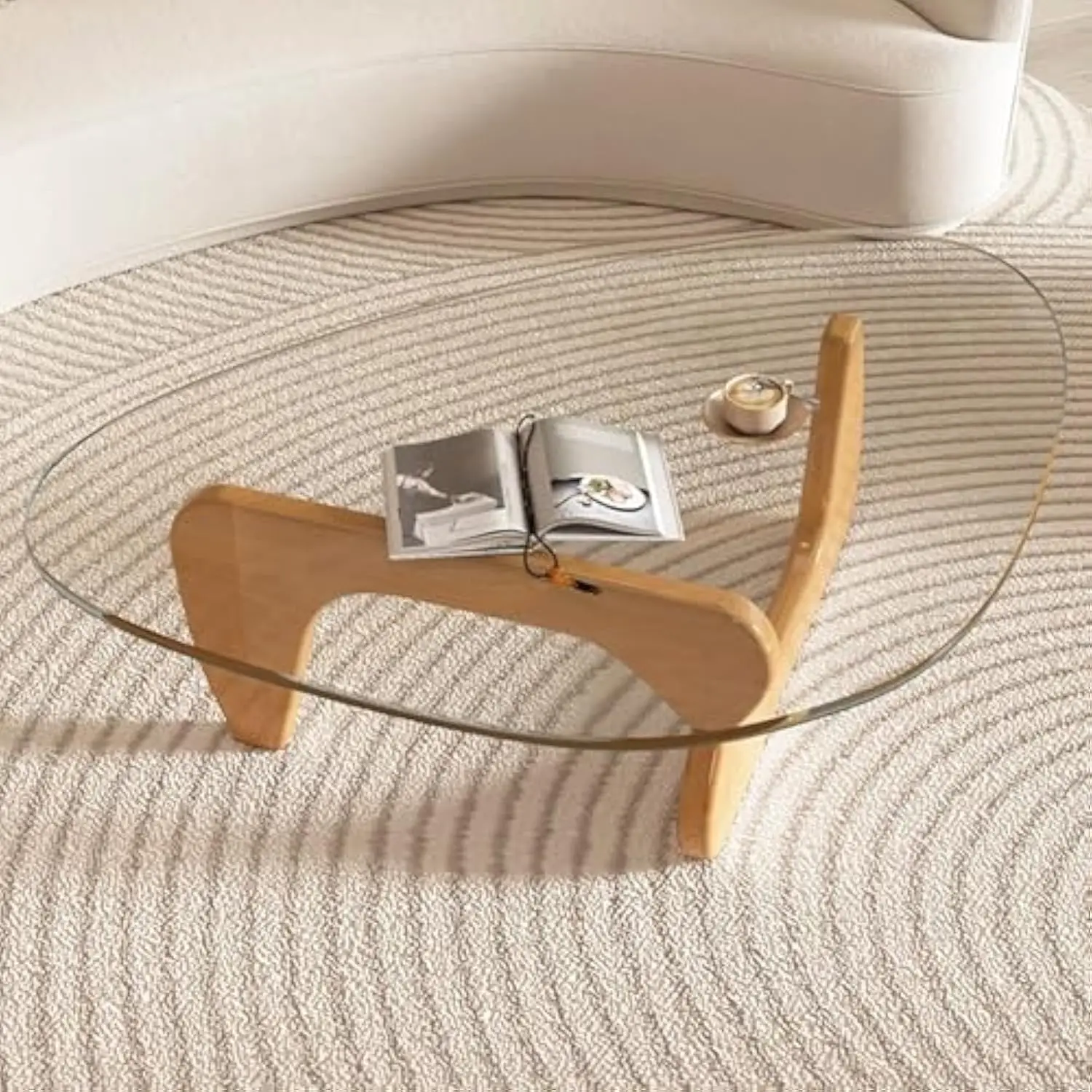
How to Identify Authentic Mid-Century Teak Tables
For collectors and enthusiasts, distinguishing genuine mid-century teak tables from later reproductions requires attention to several key indicators.
Manufacturer Markings and Provenance:
* Look for paper labels, stamps, or metal plates on undersides or inside drawers
* Research manufacturer histories to confirm production periods
* Recognize signatures or marks from known designers
* Documentation or provenance history can provide valuable authentication
Construction Methods:
* Period-appropriate joinery techniques like dovetails and mortise-and-tenon joints
* Absence of modern fasteners like Phillips-head screws or staples
* Hand-crafted elements showing slight variations rather than machine precision
* Appropriate materials for secondary woods (often oak, beech, or birch)
Patina and Age Indicators:
* Natural aging of teak to deeper amber tones
* Consistent wear patterns that correspond to normal use
* Original hardware with appropriate patina
* Finish character that shows appropriate aging
A common misconception concerns solid teak versus quality veneer construction. Many authentic high-end mid-century tables featured teak veneer over stable core materials—a technique that prevented warping while showcasing beautiful grain patterns. Quality veneer work is not a negative indicator but rather a sign of thoughtful engineering.
For those interested in authentic pieces, the mid-century modern vintage coffee tables collection offers examples with genuine period details and construction techniques that reflect true mid-century craftsmanship.
Integrating Mid-Century Teak Tables in Contemporary Interiors
The enduring popularity of mid-century teak tables stems from their remarkable versatility in complementing diverse interior styles. These pieces transition seamlessly from vintage settings to contemporary homes.
Strategic Placement Approaches:
* Create conversational groupings around coffee tables
* Use dining tables as architectural focal points
* Position side tables to create visual rhythm throughout a space
* Allow negative space around tables to highlight their sculptural qualities
Complementary Color Palettes:
* Cool blues and greens to contrast with teak’s warm tones
* Neutral backgrounds that allow wood grain to become a feature
* Accent colors drawn from the era: mustard yellow, olive green, and burnt orange
* White and cream tones to create crisp modern contrast
Scale considerations become particularly important when incorporating these pieces into modern homes. A large dining table might dominate a contemporary apartment but serve as an anchor in an open-concept space. Coffee tables should maintain comfortable clearances while providing adequate surface area for practical use.
When decorating black mid-century coffee tables, consider balancing decorative elements with negative space to maintain the clean aesthetic that defines this style. Simple ceramic vessels, art books, and sculptural objects complement these tables without overwhelming their inherent beauty.
Are Teak Tables Truly Sustainable? Environmental Considerations
The sustainability of teak furniture represents an important consideration for environmentally conscious consumers. Understanding the distinctions between vintage and newly manufactured pieces helps make informed decisions.
Vintage vs. New Production:
* Vintage teak tables represent already-harvested resources with minimal additional environmental impact
* Antique and second-hand pieces can be considered inherently sustainable choices
* Restoration extends the lifecycle of existing furniture, reducing resource demand
Modern Teak Sourcing:
* Plantation-grown teak (typically harvested at 20-25 years) vs. old-growth teak (60+ years)
* Plantation teak often has lighter color and less dense grain structure
* Forest Stewardship Council (FSC) certification indicates responsible harvesting practices
Alternative Woods Worth Considering:
* Acacia offering similar golden tones with more readily renewable sources
* White oak providing comparable durability from more available resources
* Walnut delivering rich color and excellent working properties from managed forests
For those concerned about environmental impact but drawn to the mid-century aesthetic, mid-century modern solid wood coffee tables made from sustainable alternatives can provide similar visual appeal with reduced environmental concerns.
The most sustainable approach often combines appreciation for authentic vintage pieces with careful selection of responsibly sourced new furniture when vintage isn’t available or suitable for specific needs.
Essential Care for Mid-Century Teak Tables
Proper maintenance ensures that mid-century teak tables remain beautiful and functional for generations. Different finishes require specific care approaches to preserve their character and integrity.
Maintenance Routines by Finish Type:
* Oiled finishes: Regular cleaning with mild soap and water, occasional reapplication of teak oil
* Sealed finishes: Dusting with soft cloths, avoiding harsh chemicals that damage protective layers
* Soap-finished teak: Cleaning with special soap flake solutions that maintain the matte appearance
Common Issue Troubleshooting:
* Water rings: Gentle buffing with fine steel wool and teak oil for oiled finishes
* Surface scratches: Rubbing with teak oil and fine sandpaper when necessary
* Sun damage: Rotation of pieces to ensure even exposure and color development
* Structural issues: Professional restoration for joint problems or structural damage
For vintage pieces requiring more substantial restoration, balancing authenticity with functionality becomes important. Minor repairs and gentle cleaning often preserve valuable patina, while more extensive restoration should respect original construction methods and finishes.
At Hearth Forms, we believe that teak’s natural aging process should be celebrated rather than prevented. The developing patina tells a story and adds character that new furniture simply cannot match. With proper care, mid-century teak tables continue to grow more beautiful with time—a testament to their exceptional design and craftsmanship.

